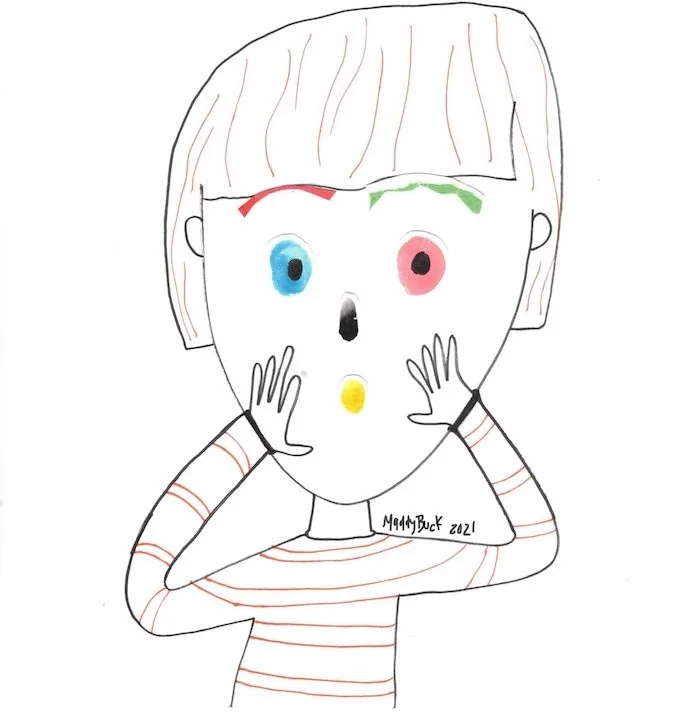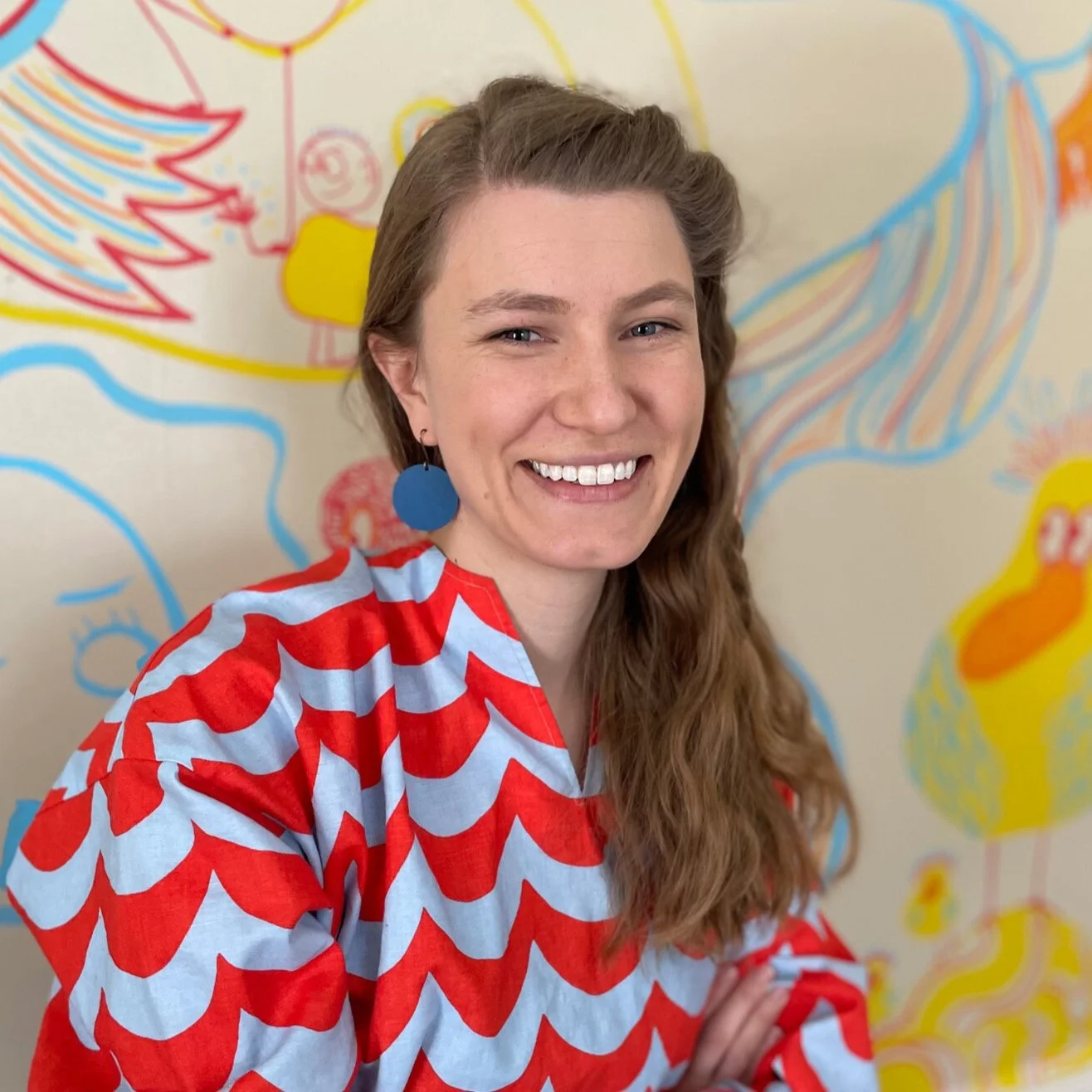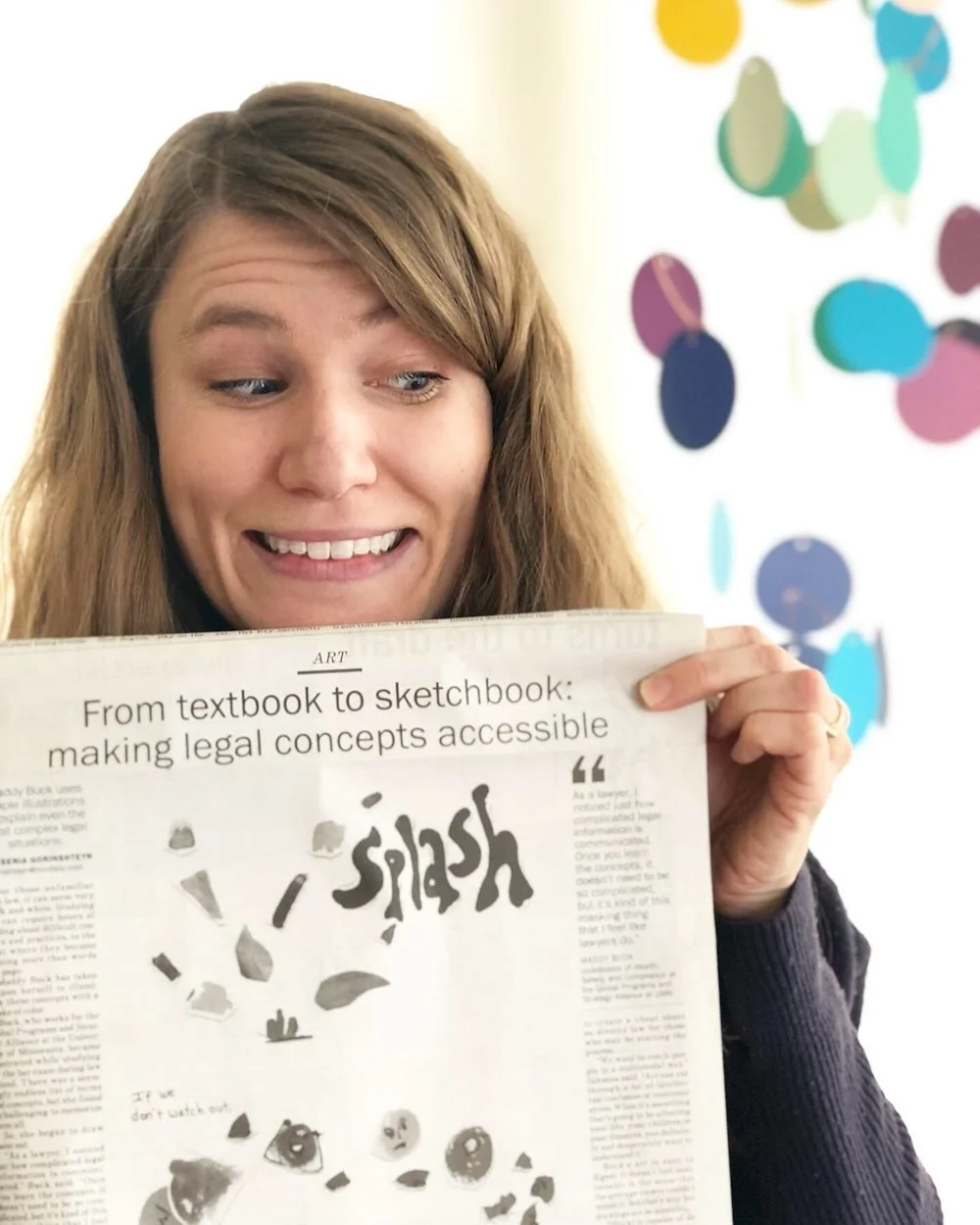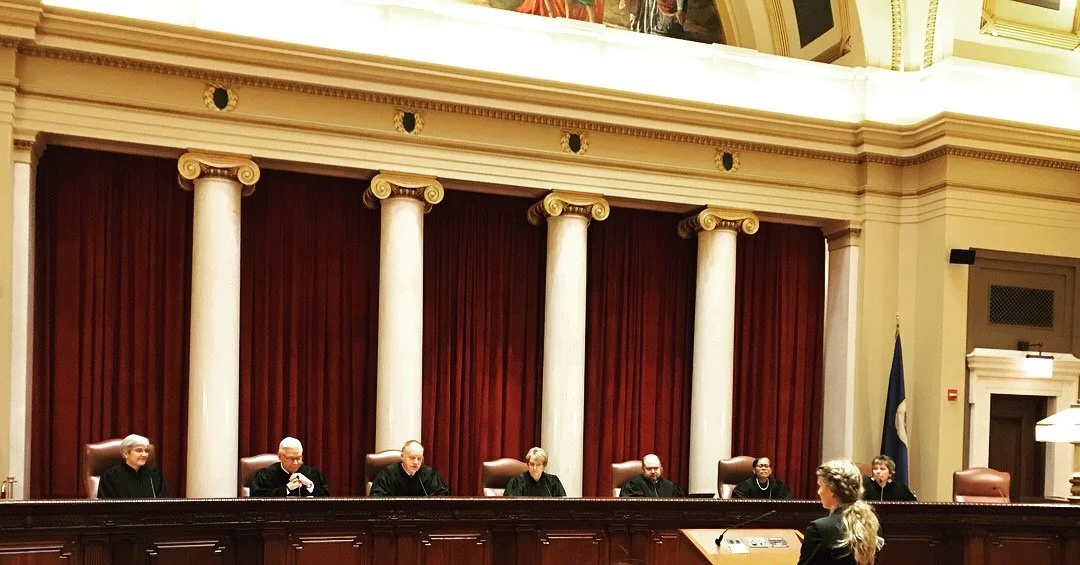Maddy Buck
is a comics artist
who specializes in
illustrated explanations of tech, law, and all things complex.



Law? Art? Do those things even go together?
Great question! I have wondered the same thing (too many times!) over the years. Let me give you a little bit more detail.
I believe that communicating complex ideas or in a playful, visual way makes them easier to absorb.
Delight, humor, and joy have a place alongside our serious world, helping us to stay engaged and hopeful.
On top of that, I believe that everyone is creative and can draw.
(Stop saying, "I can't draw!" I don't believe you!)
My work
I use drawing to interpret and simplify complex concepts, translating them into accessible visuals.
For my illustration clients, my starting point is usually a complex text that needs simplifying.
I first pull out the key ideas to create a comic script, segmented by each panel.
Then, I use a simple illustration to visualize the key ideas.
I also use this technique to share my own stories. I am currently working on a graphic (illustrated) memoir about law school, the law's connection to women in the workplace, and finding a path that feels right.
After a childhood insisting I was never going to be a lawyer, I convinced myself that law school was the surefire path to "success" in the style of Ruth Bader Ginsburg. I ignored the mentor who tried to convince me not to do it and joined the rat race of becoming a lawyer.
In the land of prestige, cold calls, and subtle competition, I felt more out of place than ever before and had to get creative, with the help of a few unexpected female mentors, to find a sustainable way forward.
The graphic memoir is dotted with explainer pages on the quirks of American law schools, the laws that have shaped opportunity for women in the last 70 years, and of the forces that have succeeded in creating the most conservative U.S. Supreme Court in a generation.
Graphic Memoir
Comics, Zines, and Kid-Oriented Activities
My graphic narrative and comics work grew out of my practice of creating handmade books with watercolor collage illustrations.
One of my picture book zines, The Book of Anger, was a chosen winner in American Illustration 39 Online Archive, 2020, and is part of the zine collections at Oxford's Bodleian Old Library and Minnesota's Hennepin County library system.
My comics and zines have appeared in Revue Planches (in French), The Rumpus, The Minnesota Center for Book Arts New Edition Exhibitions, and the Graphic Medicine’s Covid Comics collection.
You can also find a kids watercolor activity I designed, along with a special reading of The Book of Anger, from the Minneapolis Institute of Art’s Virtual Family Day: Coloring My Feelings.
For many years, I developed my art practice on the side of full-time roles as an attorney.
I balanced out the heavy days by making collage and ink picture book zines, kids activity books (Mad(dy) Libs, A Coloring Buck, The Book of Anger, and an activity designed for the Minneapolis Institute of Art), and drawing creatures on my walls in the evenings.
At first, I focused on emotions and autobiographical comics. Eventually, I incorporated this new art practice with my law background to explain timely legal issues.
Art and Law Developing Together
Tech & Law
Until recently, I worked in the legal technology start-up space, where I loved the fast-paced environment and emphasis on using technology to simplify workflows. During this time, I started drawing and writing about overlaps between law, art, and technology, particularly the issue of AI models being trained on copyrighted works. I also discovered that this new practice of simplifying ideas into text and image could be applied to discussions of technology.
Before pivoting from traditional law, I clerked for the Minnesota Supreme Court and developed a sense for how justices approach their work. I began to track the developments at the U.S. Supreme Court with this perspective in mind, growing increasingly concerned with just how much more politicized the Court's decisions were compared to what I had seen in my own state.
Drawing Through Law School
My path to becoming an artist started out in earnest at the University of Michigan Law School, where the urge to create irregular, colorful drawings arose as a reaction against, and a need to simplify, the dense legal texts I was studying. Sometimes drawing was the only way to stay awake in class or to memorize a particular concept.
While training as a lawyer, I learned how to read any text and grab its meaning so that I could explain it to others. Not only did this leave me frustrated at how unnecessarily complicated and opaque legal writing is, but it also showed me firsthand how a different form for communicating the same idea could make that idea so much more compelling.
Language & Forgotten Creativity
Language and the way that we communicate ideas was my constant before I rediscovered myself as an artist and a writer. (The creative person was always trying to peek through during this time, but lacking confidence.) I worked in a French immersion kindergarten classroom and as a copyeditor at a science publisher after returning from a year in Norway on a Fulbright research grant.
In Norway, I joined a consumer research institute to study sustainability in the textile industry with the idea that I might translate that research into a career in sustainable design. One of the projects I worked on got me the name "Wool Girl" in the Fulbright community that year. The other involved smelling jars of various fabrics that had been sweated upon. (Ignore all the synthetics! Wool is the best material for warmth and absorbing odors!)
This was the first time I had kept a sketchbook as an adult -- a log of my observations of what Norwegian fashion suggested about Norwegian culture. It was also the first time I dipped my toes into a design community, somehow convincing the Oslo School of Architecture and Design to allow me to take a knitwear course to complement my research on wool and textile. I was out of my element at design school and wouldn't gain the confidence to pursue a creative career path for a number of years.
My year in Norway was the result of my college language studies, an interest in having a positive impact on the world around me, and a wish to do "something creative" without yet believing I could. In college, I studied Norwegian, French, and Italian, hoping to find a way to speak them later on. I steered clear of the English department, believing that I hated literature (not recognizing my French studies were all about books), and remained intimidated by the art department. My worst grade in college was 2D art, solidifying my belief at the time that I wasn't really creative, even if I wished I were. (I was wrong. I had just suppressed that part of me.)
I have always been a big reader and keeper of embarrassing journals, but at some point in my teen years I forgot that my childhood was full of drawing and making things. My introduction to comics came early, and in French. I went to a French immersion elementary school, where our bookshelves were full of Asterix and other French comics (bandes dessinées, "BDs"). I still love reading BDs when I can get my hands on them.
Outside of Art
Although I don't practice, I maintain my law license and remain connected to my legal community, in particular as a member the Minnesota State Bar Association committee dedicated to determining how AI tools can be used to promote access to justice. l live in Minneapolis with my family and a large black dog named Bjørn-Knut. Oh, and I love playing tennis!











